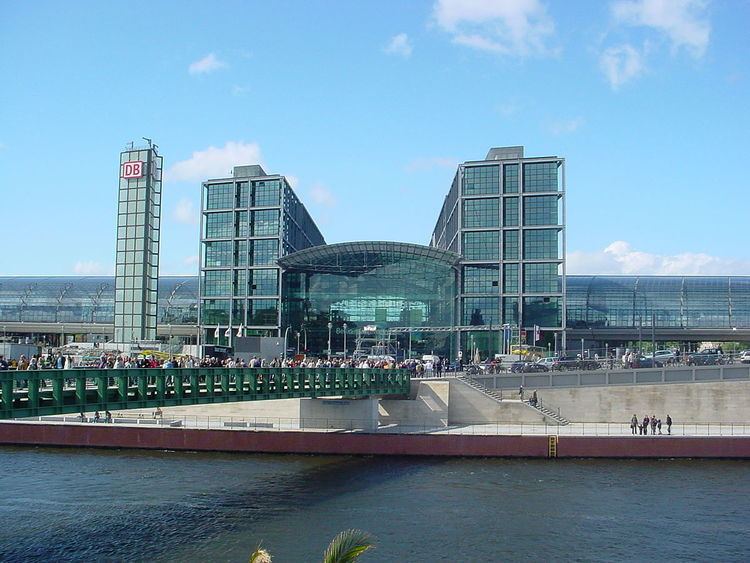 | ||
Similar Berlin Hauptbahnhof, Wuppertal Hauptbahnhof, Hagen Hauptbahnhof, Mönchengladbach Hauptbahnhof, Dortmund Hauptbahnhof | ||
About 5,400 railway stations in Germany that are owned and operated by the Deutsche Bahn subsidiary DB Station&Service are assigned into seven categories, denoting the service level available at the station.
Contents
Their assignment into the categories also influences the amount of money railway companies need to pay to DB Station&Service for using the facilities at the stations.
Category 1
The 21 stations of Category 1 are considered traffic hubs. They are permanently staffed and carry all sorts of railway-related facilities as well as usually featuring a shopping mall in the station. Most of these stations are the central (commonly referred to as main) stations (Hauptbahnhof or Hbf) of large cities with 500,000 inhabitants and above, though some in smaller cities, like Karlsruhe Hauptbahnhof, are regarded as important because they are at the intersection of important railway lines. Berlin, Hamburg, Munich and Cologne, the four biggest cities in Germany, have more than one Category 1 station. Included in the category are the following stations:
Category 2
Most of the about 87 stations of Category 2 are either important junctions of long-distance traffic or offer connections to large airports. InterCity and EuroCity trains generally call at these stations. All railway-related services, like a ticket hall and a service desk, are present at the station and the station is staffed during the usual times of traffic. The service is similar to Category 1 stations. The Category 2 stations, by state, are:
Category 3
239 stations belong to Category 3. These stations will usually feature a station hall where travellers can buy tickets and groceries, but these stations are usually not permanently staffed. They are often main stations of cities with about 50,000 inhabitants.
Examples are Görlitz station, Reutlingen, Lichtenfels, Passau Hbf or Mülheim (Ruhr) Hbf.
Category 4
Category 4 includes around 630 stations. Most of these stations have frequent connections with RegionalExpress and RegionalBahn trains. Their service level is comparable to a bus station and they offer services to commuters. This category also includes stations situated in major cities that see high usage of S-Bahn or RE/RB services.
Examples are Balingen, Bautzen, Montabaur or Coburg.
Category 5
1070 stations make up Category 5. These stations either belong to smaller, rural towns or to outlying suburban areas of major cities. Their inventory normally is "vandal-proofed" due to the lower number of passengers. They normally only have local trains calling at the station.
Examples are Sigmaringen, Köln-Holweide or Bremerhaven-Lehe.
Category 6
Category 6 includes over 2500 stations. These stations have low passenger numbers and only the most basic equipment needed is present at the station. They are akin to bus stops.
Examples of this category are Bad Wimpfen, Loxstedt or Hagen-Vorhalle.
Category 7
Most of the 870 stations of the lowest category 7 are in rural areas. Only several local trains call at these stops, which usually have not more than one platform. An example of this category is Duisburg-Entenfang or Beuron.
